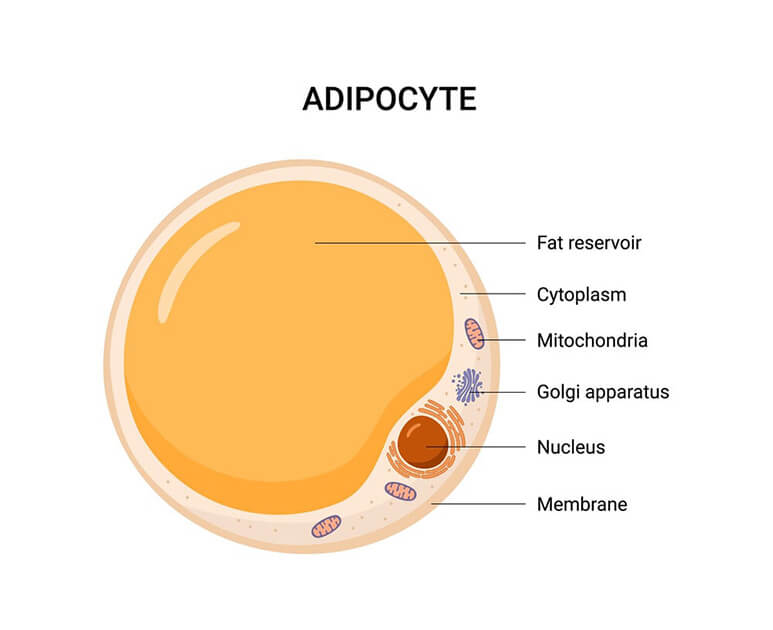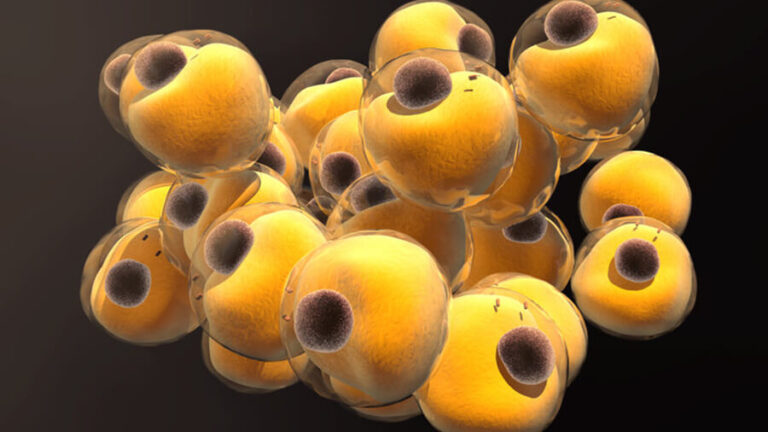The majority of people have no idea how fat cells work, how the fat burning process takes place, or where the fat goes when it is burned. Although it is a complicated physiological process, numerous researchers and experts simplified it as much as possible.
Excess energy ingested — mainly calories from fats or carbohydrates — is stored as triglycerides in fat cells. That’s how your body preserves energy for the future. This extra energy leads to a fat excess over time, which might impair your body form and health.
You must have fewer calories than you burn in effort to lose weight. A calorie deficit is a term for this situation.
A daily 500-calorie deficit is a decent spot to start or observe noticeable fat loss, however, it varies from person to person.
What happens when fat cell is burned?
The fat cell does not transfer into the muscle cell to be burnt when the body loses weight. The fat cell itself remains under the skin or on the thighs, hips, arms, and other body parts, as well as on top of the muscles, which is why muscles are difficult to see when body fat levels are high.
Triglycerides is a kind of fat that is kept inside fat cells. The fat is not burned quickly in the fat cell; it must be released from the fat cell through a sequence of hormonal and enzyme mechanisms.
The fat cell simply releases Triglycerides into the bloodstream as free fatty acids (FFAs) when stimulated, and these FFAs are carried through the blood to the tissues where energy is required.
More FFAs are delivered to the muscles that need them as blood flow to the active muscles increases. LPL (lipolysis) transports FFAs into the mitochondria, which is where they are burnt. When FFAs are produced from the fat cell, the latter shrinks, which is why the body loses fat and appears slimmer because the fat cell is now reduced. (See Image Below)

Where do you start losing fat?
The Scientists Discovered that “We don’t actually “lose” fat cells; we “clear out” fat cells”. Our body fat is essentially just a reserve source of energy, and fat cells are like storage tanks. Unlike a fixed-size gas tank in an automobile, fat cells can expand or contract in size depending on how “full” they have become.
People remain skinny despite having greater energy in food/fats for a variety of reasons.
Here are a few of them:
- It’s not only that they have a faster metabolism. As the old saying goes, they’re better than everyone else, but also because of their calculated total calorie consumption.
- They slept 6–8 hours per night, drank little or no soft drinks, rarely ate out, ate meals sitting down, did not sweet treats frequently, and established an eating and physical activity routine in their lives.
For more details, Read the complete article Why do slim people who eat a lot never seem to put on weight?
Conclusion –
Fat reduction is a complicated process regulated by a variety of factors, including food and physical exercise.
Fat cells shrink over time as their contents are consumed for energy, resulting in improved body composition and health with a suitable calorie deficit and proper exercise schedule.
To avoid any potential bad side effects, consult your healthcare practitioner before beginning your weight reduction journey.





Im pretty pleased to uncover this site. I want to to thank you for your time due to this fantastic read!! I definitely loved every part of it and i also have you book-marked to look at new stuff on your site.
[…] Benefits for Weight Loss […]